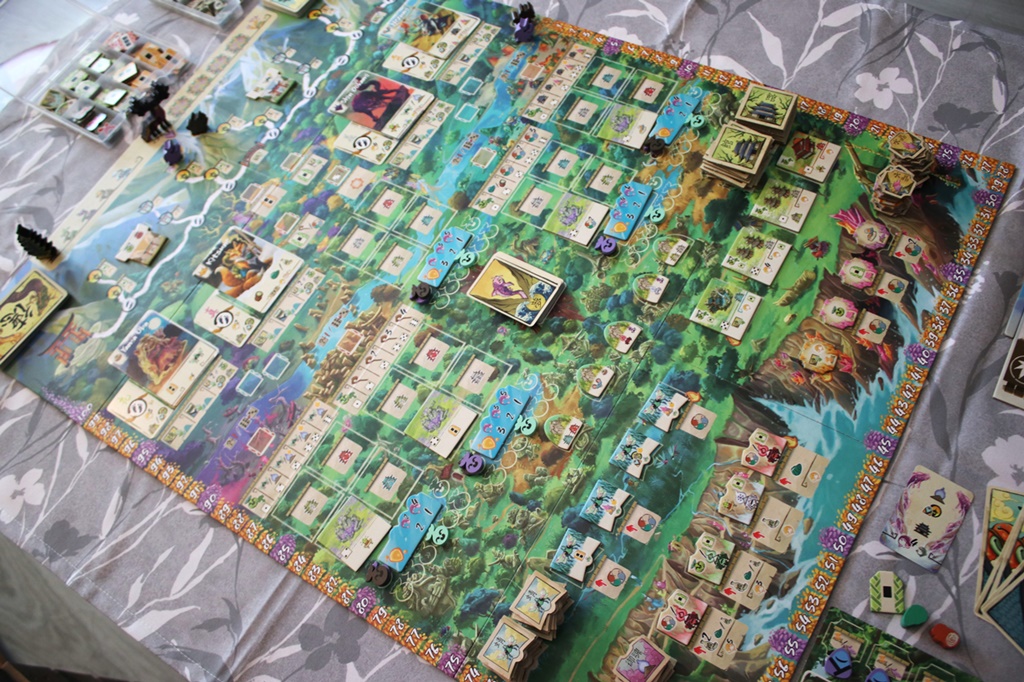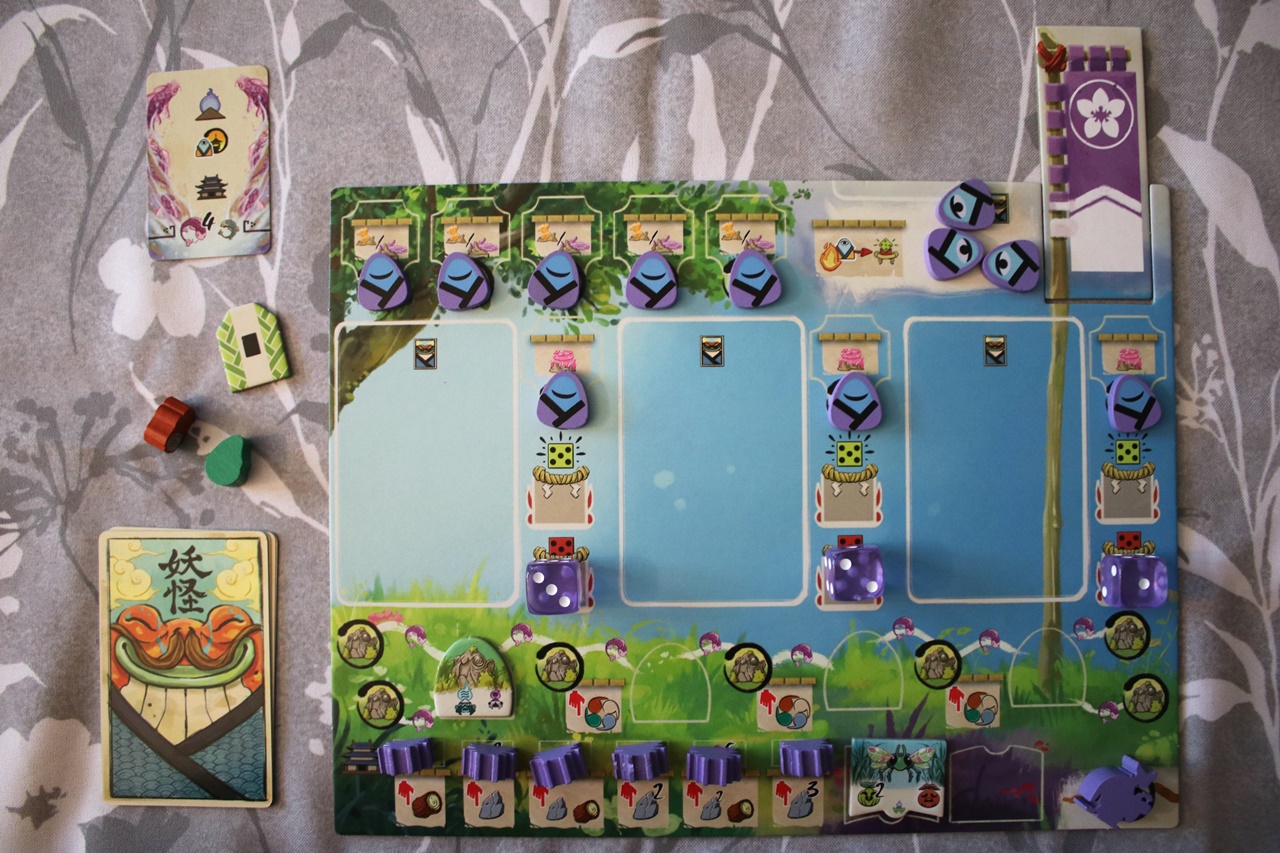Portal Games Publishing is not afraid to release a little heavier games that are not intended for a wide audience. Both the level of difficulty and the time of the game will not encourage casual players to reach for Bitoku , but it is a title that may interest more advanced people and move gray cells, because there is quite a lot going on on the board.

A lot of rules
The game consists of only four rounds, but they are long and in total will consume over two hours of our evening. The preparation itself takes a long time, because there are a lot of components. Describing all the tokens, markers and cards, their locations and their exact purpose would take up most of the review, so I will limit myself to a very general presentation of our activities. I must also emphasize that there are a lot of proper names in the manual, which will be familiar to people familiar with Japanese mythology, but for me they were an additional obstacle in the general grasp of the rules.
Each of these rounds is divided into four phases corresponding to the seasons. First comes spring, during which we draw Yōkai cards into our hand and collect perks from purple dream crystals. In the summer phase, we perform our actions in turn. You can play a Yōkai card, use dice from your board, move your dice from the main board to the other side of the river, or pass. When all players have passed, it’s fall. This time of year is all about re-ordering turns based on where our dice are placed in the House of the Great Spirit. Winter is the time to organize the components after the end of the round and prepare for the next one.
The person with the most points after the fourth winter becomes the new Great Spirit of the Woods.

Nystagmus above the table
The first thing you notice is the multitude of colors and characters on the board, cards and chips. You need to study the components and symbols carefully to fully enjoy the gameplay. Especially the areas on the board are worth arranging in your head to know what and where should go. The explanation of the areas along with their names in the manual does not help at all, because the Mitam Winding Trail, the Kurirakugan Holy River or the Hikaru Hills mean nothing to me. When you add Yōkai cards with Imomushi, Nezumi and Shin Ookami on them, tokens with Mitama Spirits (e.g. Nigi, Shinigami, Khushi), Bitoku cards with Makoto, Chuugi and Meijo and some components with more proper names it turns out that we’d all need to listen to an introductory lecture before we even got to the game to even know what part of the game we’re talking about.

Despite these terrifying names for newcomers, many overlapping mechanics and multi-stage planning to get the most out of the game, I liked Bitoku from the first game, although I consciously didn’t start doing anything until after an hour of gameplay. People who stopped at party and family games will definitely not cope with this title. There are a lot of more difficult board games on the Polish market, so it’s not such a “monster”, but still 3.71/5 on BGG obliges.
There is a lot going on at the table, even more in the players’ heads, and the reward for the effort is distant in time. Fortunately, the manual is quite decent and, apart from a long list of strange names, explains all the rules well.
The key to victory is not so much making a plan and sticking to it, but adapting and modifying our assumptions to what is on the cards, what dice we have and what our rivals are blocking us at the moment. The intertwining mechanics and various elements of the game that influence each other are a great puzzle, but it requires thinking and analyzing what is happening on the table on a regular basis. I really like how one decision triggers a domino effect that can be really effective and bring us a lot of profits.

For the persevering and patient, next games await, played much more consciously than the first, which is unlikely to be successful. My co-players weren’t as happy with Bitoku as I was, mostly because of too much information to process. However, for me, it is a very good representative of the average severity of Eurogames and after mastering nystagmus and setting the boundaries of individual areas, as well as systematizing all the rules, it can give a really satisfying game.

